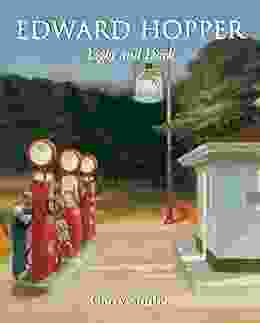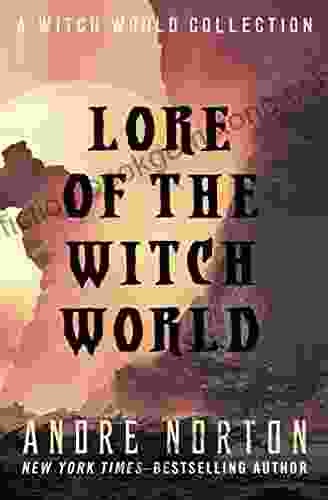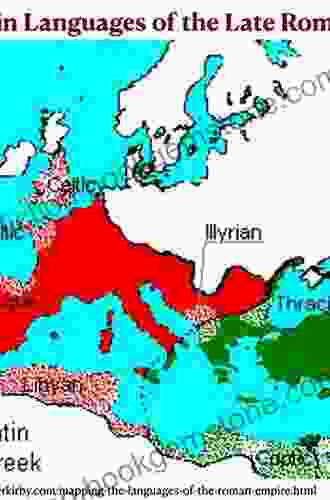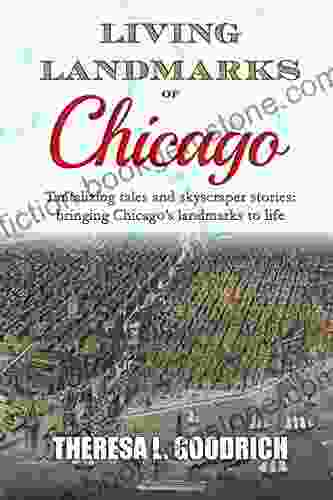The Later Roman Empire 354-378: A Comprehensive Exploration

The Later Roman Empire, also known as the Dominate, was a period in Roman history from the accession of Constantius II in 354 to the death of Theodosius I in 395. This period was marked by significant challenges and transformations, as the empire struggled to maintain its territorial integrity and adapt to the changing political, economic, and religious landscape.
4.7 out of 5
| Language | : | English |
| File size | : | 9570 KB |
| Text-to-Speech | : | Enabled |
| Screen Reader | : | Supported |
| Enhanced typesetting | : | Enabled |
| Word Wise | : | Enabled |
| Print length | : | 518 pages |
Challenges to the Roman Empire
The Later Roman Empire faced a number of challenges, including:
- External threats: The empire was constantly under threat from barbarian invasions, particularly from the Germanic tribes on the northern frontiers. These invasions put a strain on the empire's resources and manpower.
- Internal divisions: The empire was plagued by internal divisions, including religious conflicts and political instability. The Arian controversy, a dispute over the nature of Christ, divided the empire and led to persecution of non-Arians.
- Economic problems: The empire's economy was in decline, due to a number of factors, including inflation, the decline of trade, and the heavy burden of taxation.
Transformations of the Roman Empire
In response to these challenges, the Roman Empire underwent a number of transformations during the Later Roman Empire, including:
- The Diocletian Reforms: In 284, the emperor Diocletian introduced a series of reforms designed to strengthen the empire. These reforms included the division of the empire into two parts, the East and the West, and the creation of a new system of government known as the Tetrarchy.
- The Rise of Christianity: Christianity became increasingly popular in the Roman Empire during the Later Roman Empire. In 313, the emperor Constantine the Great issued the Edict of Milan, which granted toleration to Christians. Constantine also played a key role in the development of Christianity, including the convening of the Council of Nicaea in 325.
- The Foundation of Constantinople: In 330, Constantine the Great founded a new capital for the Roman Empire on the site of the ancient Greek city of Byzantium. This new capital, known as Constantinople, became the center of the Eastern Roman Empire and remained the capital of the Byzantine Empire for over a thousand years.
The Reign of Constantius II
Constantius II, the son of Constantine the Great, ruled the Roman Empire from 337 to 361. His reign was marked by a number of challenges, including the Persian War and the Arian controversy. Constantius II was a devout Arian, and he persecuted non-Arians, including the bishop of Alexandria, Athanasius.
In 351, Constantius II defeated the Persians in the Battle of Singara. This victory restored Roman control over Mesopotamia and secured the eastern frontier of the empire. However, the Arian controversy continued to divide the empire, and Constantius II's persecution of non-Arians only served to exacerbate the conflict.
The Crisis of 354-355
In 354, the Roman Empire was plunged into a crisis when the usurper Magnentius seized power in the West. Constantius II was forced to march west to defeat Magnentius, and he emerged victorious at the Battle of Mursa Major in 355. However, the crisis had weakened the empire and left it vulnerable to further barbarian invasions.
The Crisis of 354-355 marked a turning point in the history of the Roman Empire. It showed that the empire was no longer able to maintain its territorial integrity and that it was vulnerable to attack from both within and without. The crisis also led to a decline in the power of the emperor, as the army became increasingly powerful and influential.
The Reign of Julian the Apostate
In 361, Constantius II died and was succeeded by his cousin Julian. Julian was a pagan and he attempted to restore paganism to the Roman Empire. He also launched a campaign against the Persians, but he was killed in battle in 363. Julian's reign was short-lived, but it had a significant impact on the Roman Empire. His attempt to restore paganism failed, but it showed that the empire was no longer a Christian state.
The Reign of Jovian
Julian was succeeded by Jovian, who reigned from 363 to 364. Jovian was a Christian and he ended Julian's persecution of non-Arians. He also signed a peace treaty with the Persians, which ceded Mesopotamia to the Persian Empire. Jovian's reign was short-lived, but it marked a return to stability for the Roman Empire.
The Battle of Adrianople
In 378, the Roman Empire suffered a major defeat at the Battle of Adrianople. The Romans were defeated by the Visigoths, a Germanic tribe that had crossed the Danube River into the empire. The Battle of Adrianople was a turning point in Roman history. It showed that the empire was no longer able to defeat the barbarians and that it was vulnerable to invasion.
The Reign of Theodosius I
In 379, Theodosius I became emperor of the Roman Empire. Theodosius was a Christian and he made Christianity the official religion of the empire. He also defeated the Visigoths at the Battle of Aquileia in 382. Theodosius's reign marked a return to stability for the Roman Empire, but it also set the stage for the division of the empire into the East and the West.
The Later Roman Empire was a period of significant challenges and transformations. The empire faced a number of external and internal threats, and it underwent a number of changes in its political, economic, and religious landscape. These changes culminated in the division of the empire into the East and the West in 395, which marked the end of the Roman Empire.
4.7 out of 5
| Language | : | English |
| File size | : | 9570 KB |
| Text-to-Speech | : | Enabled |
| Screen Reader | : | Supported |
| Enhanced typesetting | : | Enabled |
| Word Wise | : | Enabled |
| Print length | : | 518 pages |
Do you want to contribute by writing guest posts on this blog?
Please contact us and send us a resume of previous articles that you have written.
 Best Book
Best Book Page Flip
Page Flip Bookshelf
Bookshelf Literary loom
Literary loom Chapter
Chapter Bookish
Bookish PageTurner
PageTurner Bibliophile
Bibliophile Story
Story Inkwell
Inkwell Bookworm
Bookworm Labyrinth
Labyrinth Plot Twist
Plot Twist Prose
Prose Paperback
Paperback Storyteller
Storyteller Sanctuary
Sanctuary Fiction
Fiction Reading
Reading Chronicle
Chronicle Read
Read Oleg Atbashian
Oleg Atbashian Kimberly Adams
Kimberly Adams Dara Mcanulty
Dara Mcanulty Robb Pearlman
Robb Pearlman Sachiko Toyozato
Sachiko Toyozato Rysa Walker
Rysa Walker Attica Locke
Attica Locke Michelle Elaine
Michelle Elaine Ali Dowlatshahi
Ali Dowlatshahi Andie Powers
Andie Powers Amanda Vanever
Amanda Vanever Alexander Sergeant
Alexander Sergeant Charles Evans
Charles Evans Alyssa Campbell
Alyssa Campbell Ana Victoria Calderon
Ana Victoria Calderon Allison Murray
Allison Murray Peter Egan
Peter Egan Alphonso Brown
Alphonso Brown Dov S S Simens
Dov S S Simens Hazel Soan
Hazel Soan Amy B Scher
Amy B Scher Lucia Peters
Lucia Peters Alice Albinia
Alice Albinia John Bester
John Bester Jeandre Gerber
Jeandre Gerber Ali Duffy
Ali Duffy Dale Sattler
Dale Sattler Margaret Winslow
Margaret Winslow W J Lundy
W J Lundy R D Brady
R D Brady Robert Chick
Robert Chick Brynne Asher
Brynne Asher Reese Patton
Reese Patton Allan Zola Kronzek
Allan Zola Kronzek Johannes Vloothuis
Johannes Vloothuis Bill Yenne
Bill Yenne Hans Ulrich Obrist
Hans Ulrich Obrist L A Braun
L A Braun Hunter Biden
Hunter Biden Alexandra Garbarini
Alexandra Garbarini Alice Henderson
Alice Henderson Eva Taylor
Eva Taylor Robert Pringle
Robert Pringle Casey Watson
Casey Watson Joshua Jelly Schapiro
Joshua Jelly Schapiro Murray Stewart
Murray Stewart Harriet Denison
Harriet Denison J A Konrath
J A Konrath Alicia Hall
Alicia Hall John Varley
John Varley Bob Reynolds
Bob Reynolds Winifred Aldrich
Winifred Aldrich Theresa Goodrich
Theresa Goodrich Kayla Allen
Kayla Allen James Rollins
James Rollins Amanda Vaill
Amanda Vaill Amanda Barnes
Amanda Barnes Allison Branscombe
Allison Branscombe David Larson
David Larson Grahame Booth
Grahame Booth Tiye Love
Tiye Love Terry Gilliam
Terry Gilliam Karen Falk
Karen Falk Tessa Dare
Tessa Dare Amin Maalouf
Amin Maalouf Alexandra Warren
Alexandra Warren Gerry Souter
Gerry Souter Sidney Huntington
Sidney Huntington Mark Edlitz
Mark Edlitz Peter Lane
Peter Lane Krista Luna
Krista Luna George Puckett
George Puckett Jeff Greenwald
Jeff Greenwald Amelia Jones
Amelia Jones Frances F Dunwell
Frances F Dunwell Jerry Pournelle
Jerry Pournelle Amaryllis Fox
Amaryllis Fox Stephen Birmingham
Stephen Birmingham Amy Poehler
Amy Poehler Erik Weihenmayer
Erik Weihenmayer International Learning Academy
International Learning Academy Vijay Kumar
Vijay Kumar Lydia Sloan Cline
Lydia Sloan Cline Emily Grabatin
Emily Grabatin Alyson Belle
Alyson Belle Jessi Klein
Jessi Klein Faya Causey
Faya Causey Kingsley M Bray
Kingsley M Bray Lindsay Ellis
Lindsay Ellis Alexandra Silber
Alexandra Silber Studio Atelier 21
Studio Atelier 21 M Gaspary
M Gaspary Lan Sluder
Lan Sluder Aminah Smith
Aminah Smith Andrea Coke
Andrea Coke Charles Martin
Charles Martin Martin Gayford
Martin Gayford Alida Nugent
Alida Nugent Alice Walker
Alice Walker Helen Freeman
Helen Freeman Amanda Leduc
Amanda Leduc Julia Quinn
Julia Quinn Warren Kozak
Warren Kozak Paul Tremblay
Paul Tremblay Alyssa Shelasky
Alyssa Shelasky Rosi Jarussi
Rosi Jarussi Alexandra Shulman
Alexandra Shulman Yolanda Lopez
Yolanda Lopez Hazel V Carby
Hazel V Carby Allie Allen
Allie Allen Robyn Davidson
Robyn Davidson Edd Staton
Edd Staton Alice Wong
Alice Wong Jade Blue
Jade Blue Stephen Michael Shearer
Stephen Michael Shearer Amit Offir
Amit Offir Andre Norton
Andre Norton Anthony Galvin
Anthony Galvin Allison Brennan
Allison Brennan Kenny Roy
Kenny Roy Thomas Hope
Thomas Hope Alison Freer
Alison Freer Chanel Cleeton
Chanel Cleeton Kenji Yoshino
Kenji Yoshino Pamela Spiro Wagner
Pamela Spiro Wagner Burne Hogarth
Burne Hogarth Amy Mckinley
Amy Mckinley Kenneth E Hall
Kenneth E Hall Alice Procter
Alice Procter M E Thorne
M E Thorne Victor Villasenor
Victor Villasenor William D Crump
William D Crump Steven Howell
Steven Howell Arlo Quinn
Arlo Quinn Sherilyn Connelly
Sherilyn Connelly Amanda Kuster
Amanda Kuster Gabriella Catalano
Gabriella Catalano Allan Neuwirth
Allan Neuwirth Nickey Knighton
Nickey Knighton Andra Bucci
Andra Bucci Allan A Macfarlan
Allan A Macfarlan Bethany Robertson
Bethany Robertson Colleen Hoover
Colleen Hoover Alexander Von Humboldt
Alexander Von Humboldt Pauli Murray
Pauli Murray Carol Belanger Grafton
Carol Belanger Grafton Eric Flint
Eric Flint Christie Golden
Christie Golden Alison Weir
Alison Weir Lalita Tademy
Lalita Tademy Alexander Bennett
Alexander Bennett Jonathan Gardiner
Jonathan Gardiner Alistair Maclean
Alistair Maclean Amanda Hislop
Amanda Hislop Richard Price
Richard Price Dave Jay
Dave Jay Rudy Wiebe
Rudy Wiebe Christopher Golden
Christopher Golden Grace M Cho
Grace M Cho Dreamstorm Publications
Dreamstorm Publications Justin Eisinger
Justin Eisinger Lisa Pietsch
Lisa Pietsch Emily Ratajkowski
Emily Ratajkowski Emily Crafts
Emily Crafts Tracy Osborn
Tracy Osborn E M Foner
E M Foner Karine Jean Pierre
Karine Jean Pierre Alicia Beckton
Alicia Beckton Alexis Schlegel
Alexis Schlegel John Jackson Miller
John Jackson Miller Lauren Wilkinson
Lauren Wilkinson Kindle Edition
Kindle Edition Allan Ira Bass
Allan Ira Bass Alwyn Crawshaw
Alwyn Crawshaw Joshua Jay
Joshua Jay Ronald Florence
Ronald Florence Terry Mcmillan
Terry Mcmillan Rukmini Vijayakumar
Rukmini Vijayakumar Jason Vachon
Jason Vachon Jeff A Menges
Jeff A Menges America Ferrera
America Ferrera Nigel Randell
Nigel Randell Amihan Balasabas
Amihan Balasabas Meredith Hall
Meredith Hall Allison Markin Powell
Allison Markin Powell Anchee Min
Anchee Min Anand Prahlad
Anand Prahlad Megan Massacre
Megan Massacre Michael Powell
Michael Powell Michael V Hayden
Michael V Hayden Lianne Dillsworth
Lianne Dillsworth Paul Doty
Paul Doty Kate Field
Kate Field Alistair Moffat
Alistair Moffat Hisham Matar
Hisham Matar David Bergsland
David Bergsland Stephen Mason
Stephen Mason Clary Illian
Clary Illian Sally K May
Sally K May Alexandra Fuller
Alexandra Fuller Levi Zelkind
Levi Zelkind Kenneth Cline
Kenneth Cline Mark De Silva
Mark De Silva Anne M Scott
Anne M Scott Helen Mcginn
Helen Mcginn Amy S F Lutz
Amy S F Lutz Amy Burkert
Amy Burkert Christina Ezrahi
Christina Ezrahi Amor Fenn
Amor Fenn Cormac Mccarthy
Cormac Mccarthy Seth Emerson
Seth Emerson Dee Brown
Dee Brown Jeff Chenault
Jeff Chenault Nicole Lynn
Nicole Lynn Bill Zarchy
Bill Zarchy W E B Griffin
W E B Griffin Peter Bacho
Peter Bacho Grayson Sinclair
Grayson Sinclair Deidre M Pike
Deidre M Pike Alexander Weinstein
Alexander Weinstein Thomas Sanchez
Thomas Sanchez Chris Peterson
Chris Peterson I O Adler
I O Adler Alfred Habegger
Alfred Habegger Alison Ross
Alison Ross Allan R Ellenberger
Allan R Ellenberger Alicia Malone
Alicia Malone Patrick Devaney
Patrick Devaney G Michael Dobbs
G Michael Dobbs Chris Vines
Chris Vines Fay Simpson
Fay Simpson William Bennet Stevenson
William Bennet Stevenson Rachel Rhys
Rachel Rhys Alois Senefelder
Alois Senefelder Terry Schott
Terry Schott Amanda Bouchet
Amanda Bouchet Elamin Abdelmahmoud
Elamin Abdelmahmoud Barbara Hambly
Barbara Hambly Jade Asikiwe
Jade Asikiwe Simon Goldhill
Simon Goldhill Allegra Kent
Allegra Kent Tiffani Goff
Tiffani Goff Eve Vaughn
Eve Vaughn Jim Stott
Jim Stott Rabindranath Tagore
Rabindranath Tagore Anders De La Motte
Anders De La Motte Kimberly Brown
Kimberly Brown Liza Gershman
Liza Gershman Ortrun Egelkraut
Ortrun Egelkraut Christopher Finch
Christopher Finch Wolfedale Press
Wolfedale Press Cap Daniels
Cap Daniels Bill Cunningham
Bill Cunningham Will Dodson
Will Dodson Christopher Bolton
Christopher Bolton Alexander H Rosenberg
Alexander H Rosenberg Ammianus Marcellinus
Ammianus Marcellinus Douglas Johnson
Douglas Johnson Brandon Sanderson
Brandon Sanderson Lance Richardson
Lance Richardson Masa Seikou
Masa Seikou Parker J Cole
Parker J Cole William C Dietz
William C Dietz Amaya Black
Amaya Black Jenny Handy
Jenny Handy Ian Anderson
Ian Anderson Amber Brock
Amber Brock Alexander Speltz
Alexander Speltz Kathryn Cramer
Kathryn Cramer J N Chaney
J N Chaney Margaret Bunson
Margaret Bunson Alma Nilsson
Alma Nilsson Stan Grant
Stan Grant Glyn Macey
Glyn Macey Ashley Niedringhaus
Ashley Niedringhaus Amaka Samrah Linus
Amaka Samrah Linus Amir Eshel
Amir Eshel E J Fleming
E J Fleming Karin Tidbeck
Karin Tidbeck Elizabeth Taylor
Elizabeth Taylor Alina Wheeler
Alina Wheeler Alison Lumbatis
Alison Lumbatis Alyn Shipton
Alyn Shipton T E Bakutis
T E Bakutis Alexander Mackenzie
Alexander Mackenzie Alia Thabit
Alia Thabit Yoshiko Uchida
Yoshiko Uchida Christine Chitnis
Christine Chitnis Jesse Fox
Jesse Fox Steven Awalt
Steven Awalt Alistair Mcguinness
Alistair Mcguinness Ronni L Gordon
Ronni L Gordon Allen Rucker
Allen Rucker Beth Brown Reinsel
Beth Brown Reinsel Christopher Hopper
Christopher Hopper Amber Easby
Amber Easby Alison King
Alison King Amy M Davis
Amy M Davis Ross Gay
Ross Gay Gini Koch
Gini Koch Michael D Pitt
Michael D Pitt Mz Lady P
Mz Lady P Francis A Schaeffer
Francis A Schaeffer Amber Ruffin
Amber Ruffin Hitomi Shida
Hitomi Shida Peter Cronin
Peter Cronin Nancy Jooyoun Kim
Nancy Jooyoun Kim Alexey Osadchuk
Alexey Osadchuk Laquette
Laquette Johanna Garton
Johanna Garton Rana Mitter
Rana Mitter Robert Blumenfeld
Robert Blumenfeld Michael Pronko
Michael Pronko Anand Pandian
Anand Pandian Raul Caceres M D
Raul Caceres M D Ma Jian
Ma Jian Patricia Konczynski Jennifer Herbst
Patricia Konczynski Jennifer Herbst Alexandria House
Alexandria House Alexander Frater
Alexander Frater Ali Bey
Ali Bey C Vann Woodward
C Vann Woodward Rod Reynolds
Rod Reynolds Allan Haley
Allan Haley Alvaro Castagnet
Alvaro Castagnet Arlen Gargagliano
Arlen Gargagliano Andre Gonzalez
Andre Gonzalez Robert J Sawyer
Robert J Sawyer Minerva Peters
Minerva Peters Amy Butler
Amy Butler Margery Leveen Sher
Margery Leveen Sher Jo Weldon
Jo Weldon Christopher Lee Philips
Christopher Lee Philips Jessica Fishman
Jessica Fishman G P Hudson
G P Hudson Laura Dave
Laura Dave Marguerite Penrose
Marguerite Penrose Sharon Lee
Sharon Lee Jan Dalley
Jan Dalley Amelia Pang
Amelia Pang Jamie Ibson
Jamie Ibson Margaret B Blackman
Margaret B Blackman Amira Hass
Amira Hass Joyce Hicks
Joyce Hicks M M Kaye
M M Kaye Kimberly Chrisman Campbell
Kimberly Chrisman Campbell Maxwell Ayrton
Maxwell Ayrton Simon J Hall
Simon J Hall Amanda Brooks
Amanda Brooks Kevin Hearne
Kevin Hearne Jennifer Saginor
Jennifer Saginor Allison Hong Merrill
Allison Hong Merrill John H Cunningham
John H Cunningham Derek Pardue
Derek Pardue Jesmyn Ward
Jesmyn Ward Duncan M Hamilton
Duncan M Hamilton Alfred Gell
Alfred Gell Ly Tran
Ly Tran Mike Fu
Mike Fu Allan Kaster
Allan Kaster Kevin Steverson
Kevin Steverson Karrine Steffans
Karrine Steffans K Gorman
K Gorman Thomas Powers
Thomas Powers Leticia Ordaz
Leticia Ordaz Aline Ash
Aline Ash Matthew Gabriele
Matthew Gabriele Aliette De Bodard
Aliette De Bodard Amy Chavez
Amy Chavez Amanda J Spedding
Amanda J Spedding Amanda Milo
Amanda Milo Robert K Massie
Robert K Massie Anna Mason
Anna Mason Allison Alexander
Allison Alexander Montana Hodges
Montana Hodges Phil Huddleston
Phil Huddleston Elmore Leonard
Elmore Leonard Bern Will Brown
Bern Will Brown Johan Huizinga
Johan Huizinga Brad Prager
Brad Prager Eleanor Roosevelt
Eleanor Roosevelt Paul Adams
Paul Adams Alyona Nickelsen
Alyona Nickelsen John Steinbeck
John Steinbeck Andrew Gillsmith
Andrew Gillsmith Alison Lee
Alison Lee L Smith
L Smith Dianne Duvall
Dianne Duvall Amy Kuivalainen
Amy Kuivalainen Bas Bakker
Bas Bakker Amanda B Cosgrove
Amanda B Cosgrove Alice Hoffman
Alice Hoffman Navid Kermani
Navid Kermani Maureen Paton
Maureen Paton Vito Adriaensens
Vito Adriaensens Raine Thomas
Raine Thomas Samira Shackle
Samira Shackle Tim Rock
Tim Rock Esi Edugyan
Esi Edugyan Alexander Monro
Alexander Monro Bruce Larson
Bruce Larson Boye Lafayette De Mente
Boye Lafayette De Mente Tom Heintjes
Tom Heintjes Amy Odell
Amy Odell Gordon K Hirabayashi
Gordon K Hirabayashi Katrina Jackson
Katrina Jackson Alexandra Sokoloff
Alexandra Sokoloff Susan Elizabeth Phillips
Susan Elizabeth Phillips Alexandre Roger
Alexandre Roger Alexander Armstrong
Alexander Armstrong Alfred Bester
Alfred Bester Peter Schiessl
Peter Schiessl Theresa Weir
Theresa Weir Alfred Hitchcock
Alfred Hitchcock Alun Anderson
Alun Anderson Anna Viroubova
Anna Viroubova Lan Yan
Lan Yan Calum Waddell
Calum Waddell Jared Mandani
Jared Mandani Rahna Reiko Rizzuto
Rahna Reiko Rizzuto Alfred Russel Wallace
Alfred Russel Wallace Iwao Takamoto
Iwao Takamoto Amanda Grange
Amanda Grange Richard Bell
Richard Bell Suzie Mackenzie
Suzie Mackenzie Guy Wann
Guy Wann Peter L Winkler
Peter L Winkler Tom Miller
Tom Miller
Light bulbAdvertise smarter! Our strategic ad space ensures maximum exposure. Reserve your spot today!

 Dennis HayesEdward Hopper Light and Dark: Illuminating the Inner Workings of a Complex...
Dennis HayesEdward Hopper Light and Dark: Illuminating the Inner Workings of a Complex... Ivan TurnerFollow ·8.5k
Ivan TurnerFollow ·8.5k Carson BlairFollow ·10.9k
Carson BlairFollow ·10.9k Bo CoxFollow ·10.9k
Bo CoxFollow ·10.9k Thomas MannFollow ·5.1k
Thomas MannFollow ·5.1k Gavin MitchellFollow ·13.9k
Gavin MitchellFollow ·13.9k Rick NelsonFollow ·7.2k
Rick NelsonFollow ·7.2k Owen SimmonsFollow ·5.6k
Owen SimmonsFollow ·5.6k Dennis HayesFollow ·2.9k
Dennis HayesFollow ·2.9k

 Kyle Powell
Kyle PowellThe Enchanting Realms of Witch World: A Collector's Guide...
In the vast and...

 Ethan Mitchell
Ethan MitchellSwap Night on Union Station EarthCent Ambassador 19: A...
On a crisp autumn evening in the...

 Gage Hayes
Gage HayesThe Last Reaper: A Military SciFi Epic That Will Leave...
The Last Reaper...

 Christopher Woods
Christopher WoodsUnveiling the Masterpiece: The Original Pattern Bible by...
In the realm of pattern design, there...

 William Golding
William GoldingDiscover the Unfathomable Con Living Earthcent Universe:...
An Expansive Cosmic Tapestry In the...
4.7 out of 5
| Language | : | English |
| File size | : | 9570 KB |
| Text-to-Speech | : | Enabled |
| Screen Reader | : | Supported |
| Enhanced typesetting | : | Enabled |
| Word Wise | : | Enabled |
| Print length | : | 518 pages |












